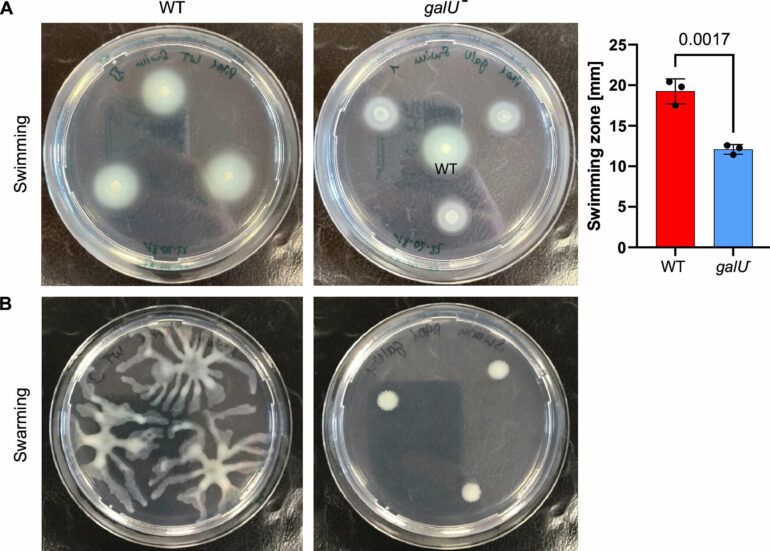Scientists have discovered a target for the development of a drug to combat a bacterium that can cause chronic lung infection in hospitalized patients, immunocompromised individuals and people with cystic fibrosis.
The multidrug-resistant bacteria Pseudomonas aeruginosa infects the lung and promotes an accelerated decline of pulmonary function. It has been acknowledged as a serious threat by the Centers for Disease Control and Prevention and rated a critical priority by the World Health Organization.
The Fraunhofer International Consortium for Anti-Infective Research (iCAIR)—led by Distinguished Professor Mark von Itzstein AO at Griffith University’s Institute for Glycomics and Professor Dr. Armin Braun at the Fraunhofer Institute for Experimental Medicine (ITEM) in Hannover, Germany, in collaboration with researchers at the Hannover Medical School—established a joint research program that tackled antibiotic resistance development of Pseudomonas aeruginosa.
The work is published in the journal mBio.
“Utilizing human ex vivo precision-cut lung slices and lung cells as infection models, along with combined crystallography and biochemical studies, we were able to precisely characterize the molecular basis for the role of a certain enzyme in P. aeruginosa infection biology,” said Dr. Larissa Dirr, Institute for Glycomics Early Career Research Leader and co-senior author on a collaborative study with co-senior author Dr. Jana Führing from Hannover Medical School.
“While the active site of the bacterial enzyme is very similar to the human enzyme, our now published study revealed a new functionally crucial allosteric site that is unique to the bacterial enzyme and identifies an important point-of-difference between the human and bacterial enzyme. This point-of-difference provides an excellent concrete starting point for the structure-based development of selective bacterial inhibitors.
“Currently, we are in the process of using structure-based drug design to develop a selective inhibitor against Pseudomonas aeruginosa.
“Ultimately, as the allosteric site is conserved across bacterial enzymes, our aim is to use this knowledge to design a broad-spectrum antibiotic against Gram-negative and Gram-positive bacteria.”
Institute for Glycomics Acting Executive Director Professor Michael Jennings said this discovery was a key breakthrough for the iCAIR Consortium.
“The alliance establishes a development platform that covers all the steps of a targeted drug development process from identifying potential points of attack, right through to drug design and efficacy testing,” Professor Jennings said.
“I have no doubt the developments of this study will illustrate the power of global collaboration and the translation of world-leading science to deliver novel drugs to the community.”
More information:
Larissa Dirr et al, Tetramerization is essential for the enzymatic function of the Pseudomonas aeruginosa virulence factor UDP-glucose pyrophosphorylase, mBio (2024). DOI: 10.1128/mbio.02114-23
Provided by
Griffith University
Citation:
Global collaboration discovers drug target to combat chronic lung infection (2024, April 10)



